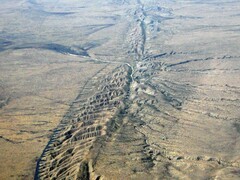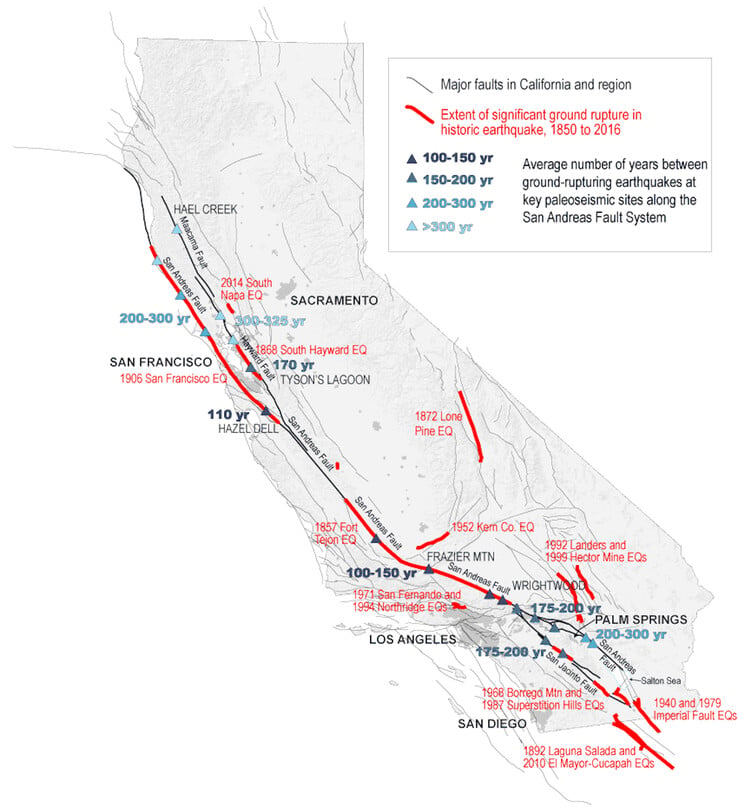
The famous San Andreas fault covers 1,200 km in California and is distinguished by two plates which slowly but surely slide against each other. A powerful earthquake, known as “Big One”, is to be feared. However, it seems to be delayed, which is not good news.
Seismologists and scientists around the world are increasingly worried because the disasters caused by these two plates are extremely devastating. It must be said that their magnitudes on the Richter scale beat all records, such as the earthquake in 1908 which reached a magnitude of 7.8 and completely destroyed the city of San Francisco and its surroundings. As a reminder, according to this scale, an earthquake of a magnitude of 8 is thirty times more powerful than an earthquake measured at 7.
The fault itself is divided into three distinct segments. First of all, that of the center is the calmest, because it moves slowly and causes few powerful earthquakes. The north segment is to be monitored because it is likely to cause a powerful earthquake. Finally, the southern segment is the most dangerous, which can completely destroy the city of Los Angeles.
Faced with the threat represented by this flaw, scientists try to predict when the next “Big One” occurs. And although it is impossible to predict it with precision, there are usual cycles, as shown in the following image.

However, they believe that some parts of the flaw are late compared to their usual cycles. This could lead to a significant increase in seismic activity. In other words, if the delay is real, sensitive areas could undergo violent and destructive earthquakes, causing a domino effect on other sections of the fault. It goes without saying that the consequences would be disastrous for citizens, with thousands of victims and countless destroyed infrastructure.



